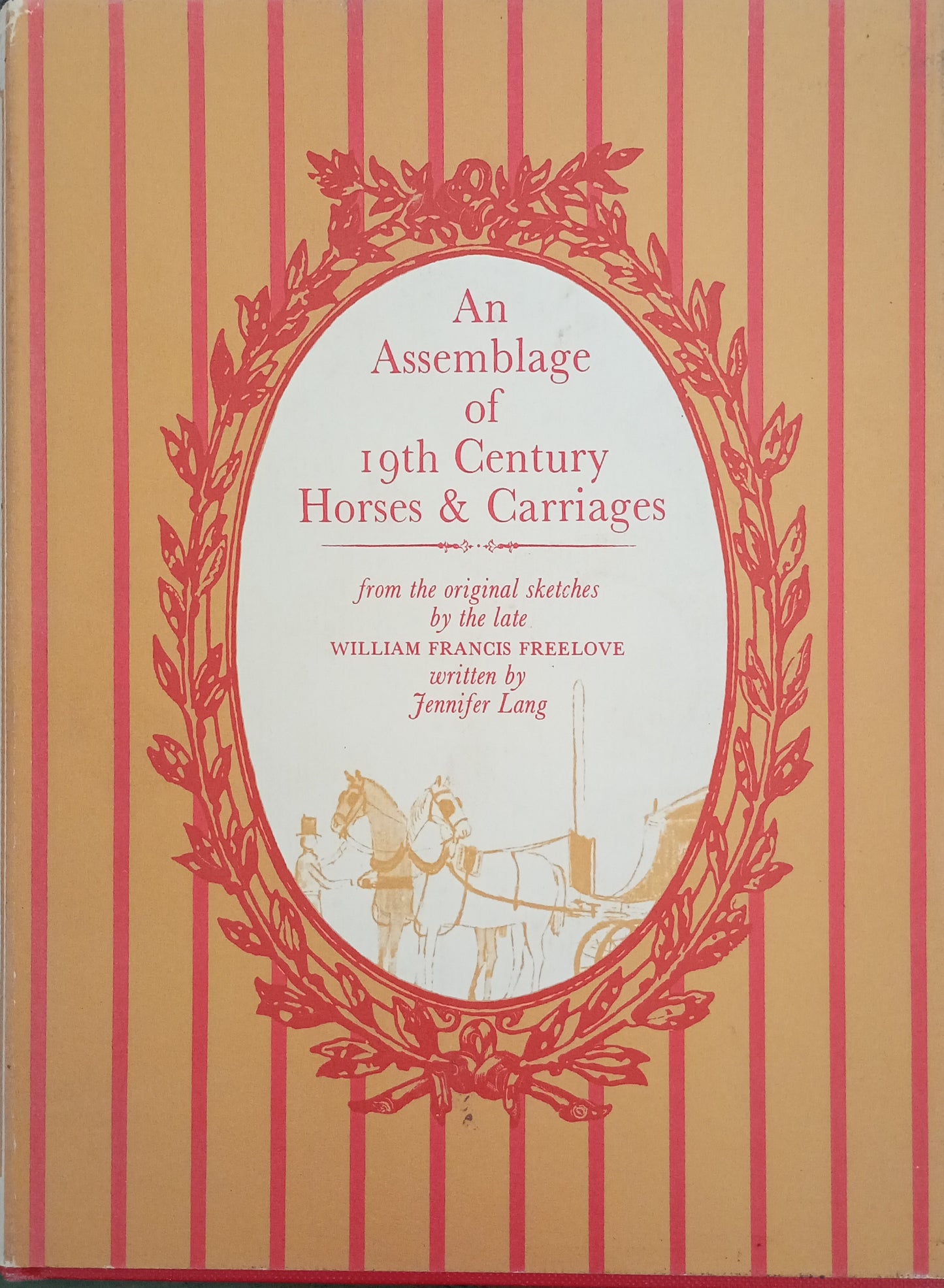Mangaiti Equine Books
An Assemblage of 19th Century Horses & Carriages
An Assemblage of 19th Century Horses & Carriages
Couldn't load pickup availability
Jennifer Lang.
Hardback, second hand, illustrations in colour.
Original sketches by the late William Francis Freelove.
WILLIAM FRANCIS FREELOVE
(1846-1920)
In 1871 a quiet young Quaker married a cooper's daughter from Kent and brought her home to Kingston. Queen Victoria had been on the throne for 33 years and the roads macadamized for even longer. With railways running the length and breadth of the country, communications had never been better, but William Freelove's contemporaries were still utterly dependent on the horsedrawn vehicle for the delivery of all things to all men. Although he probably never even rode a horse, let alone drove in a carriage, the young man was fascinated by the vehicles he saw around him. He was as interested in the slow plodding goods carts, as in the swift and gleaming private carriages
Little is known about William Francis Freelove, except that he was a solicitors' clerk, he wrote well and was a good calligrapher. Like all good Victorian parents he and his wife, Elizabeth, had a large family-two sons and four daughters. Keeping a wife and bringing up a family of six, on a clerk's salary at the turn of the century required the strictest economy and there would have been no money to spare for toys for the children or expensive hobbies for their parents.
So to amuse his children and himself he began sketching these horses and carriages as he saw them in the streets around him. By 1873 he had produced a book of over 70 coloured sketches of every variety of business and pleasure vehicle to be seen in the vicinity of London. Entitled simply Horses & Carriages, it was not intended as a technical book or standard work. He painted for his own enjoyment and, beginning with the many ordinary vehicles, became more absorbed by his subject as he sought more bizarre equipages to add to his collection. The book was never published. Before he died he gave it to his youngest son, Ernest Freelove, and many year's later Ernest's widow passed it on to her nephew for his children. It was eventually discovered in an attic, among the usual sort of family jumble, and recognised as a fascinating commentary on the life-style and everyday scenes of nineteenth-century life.



